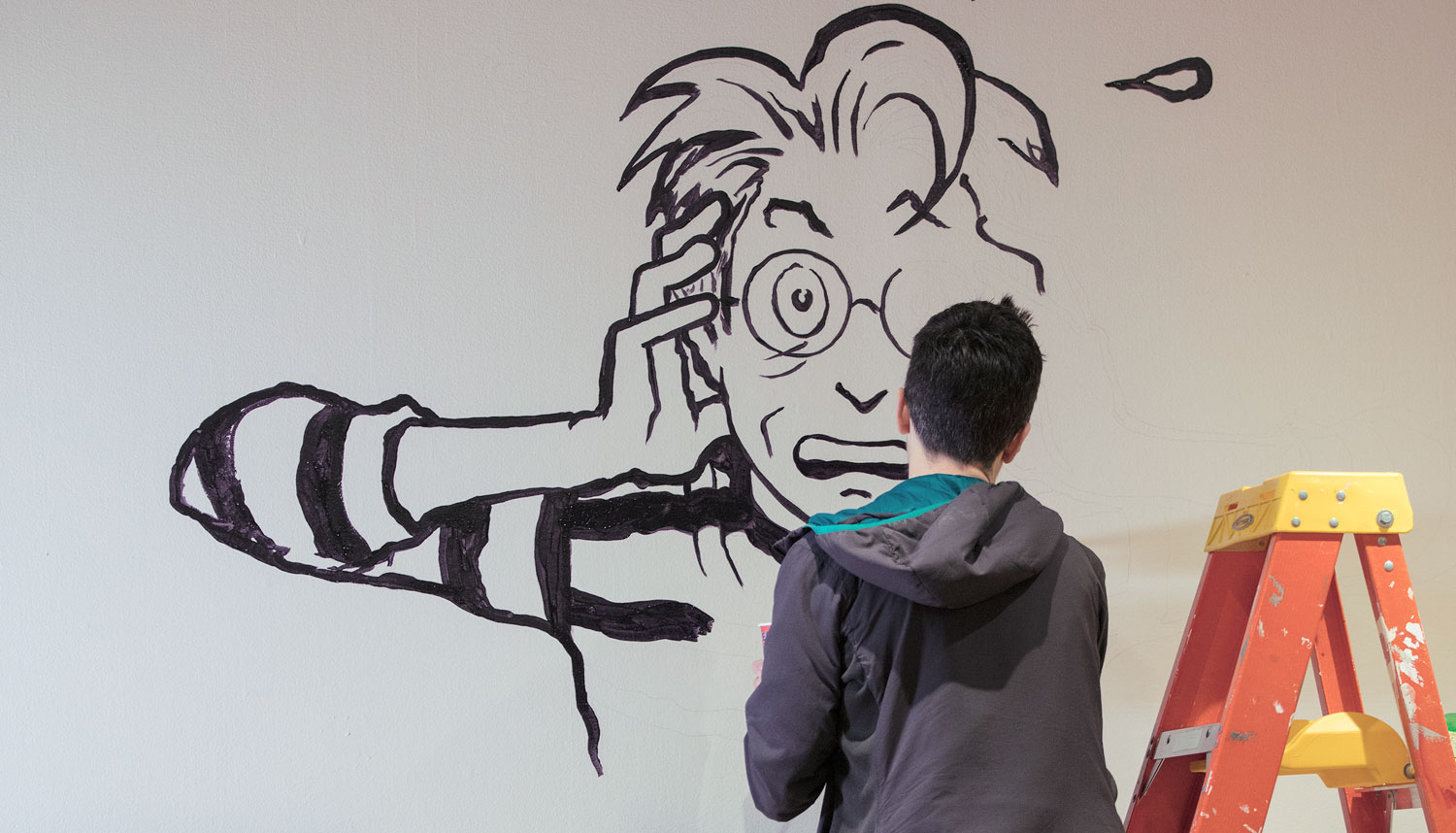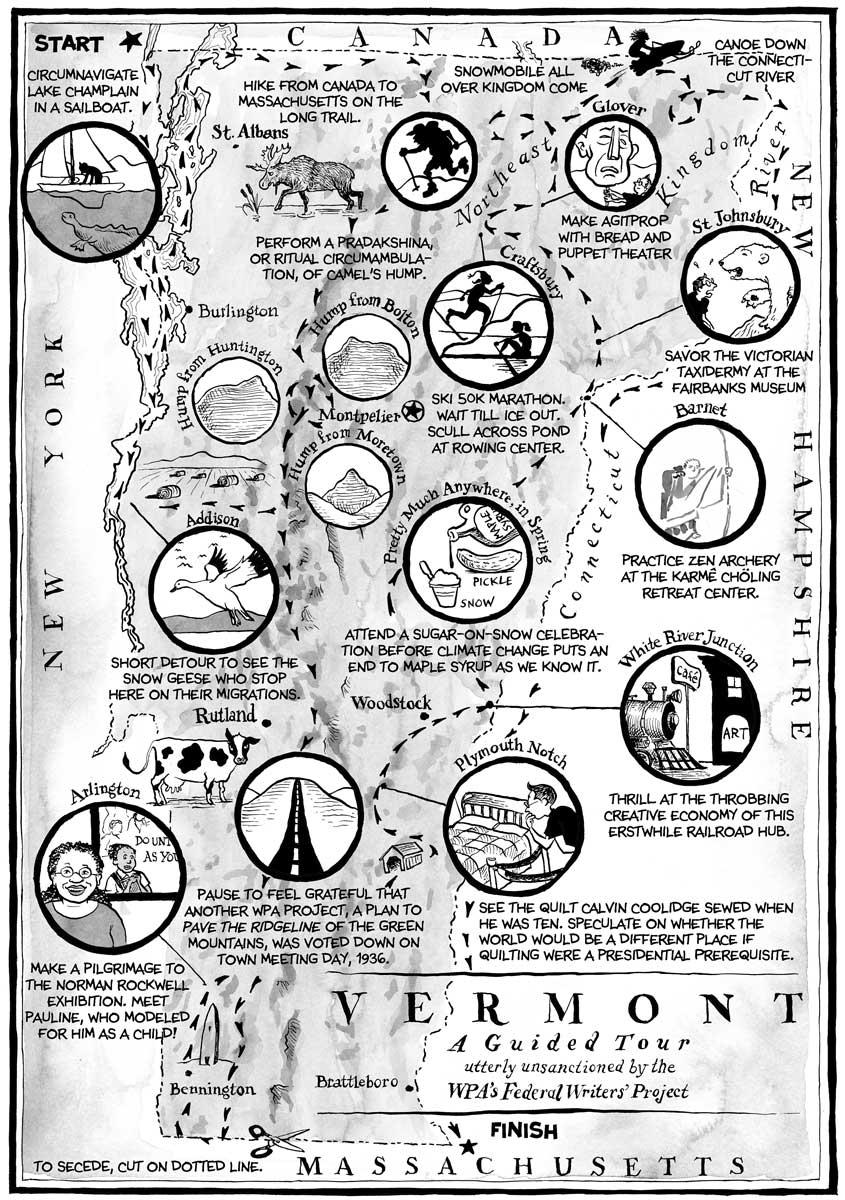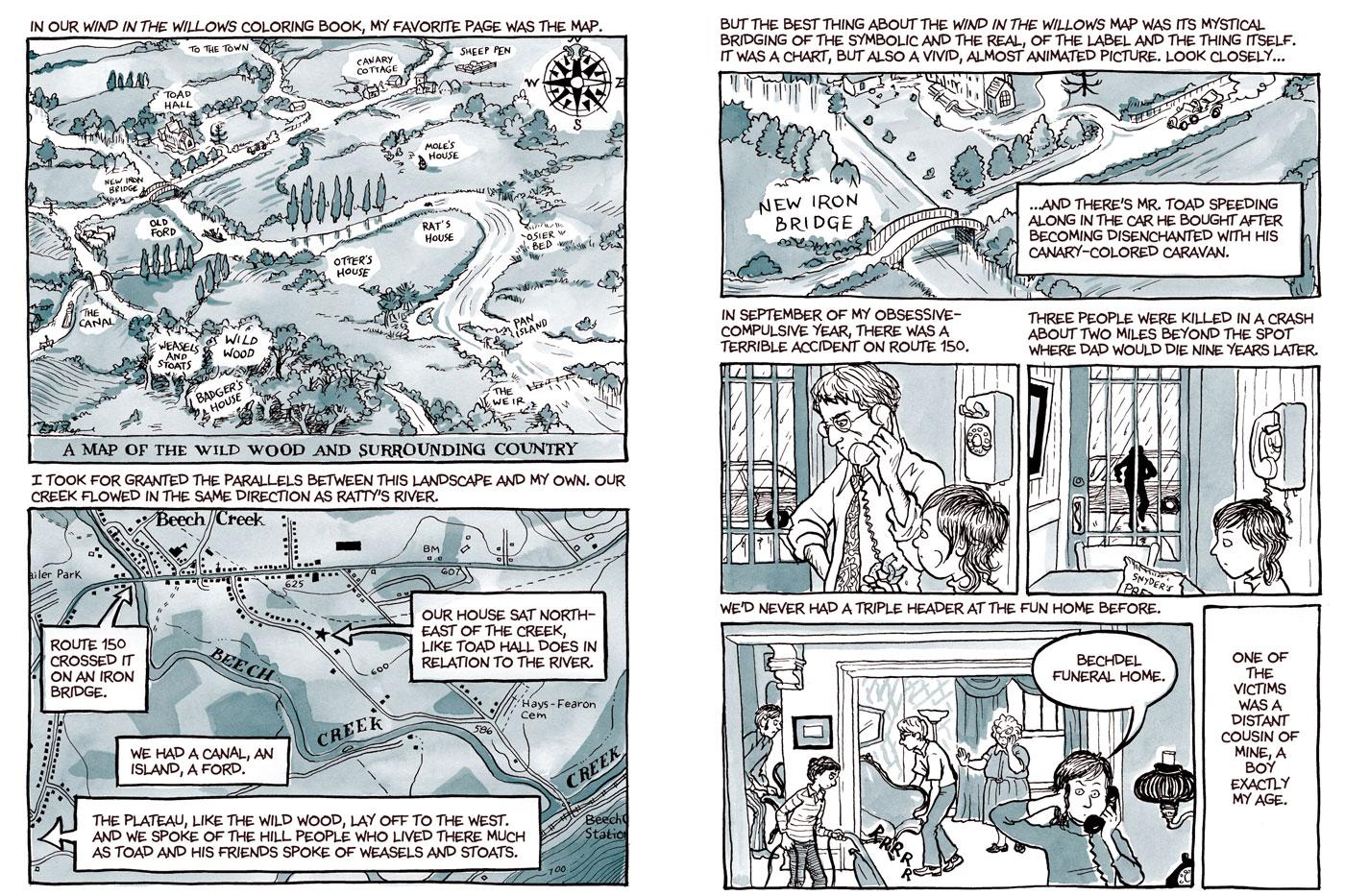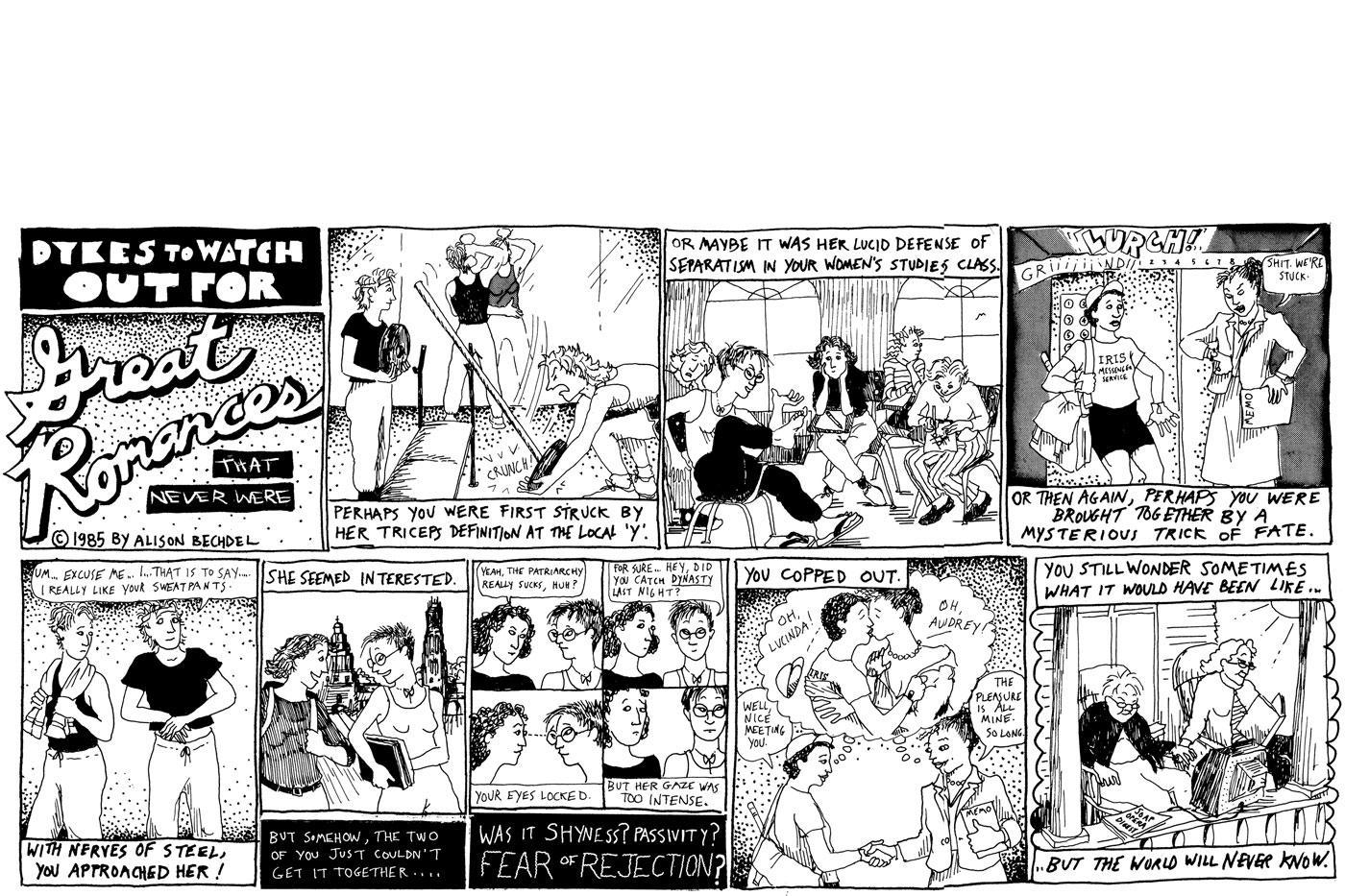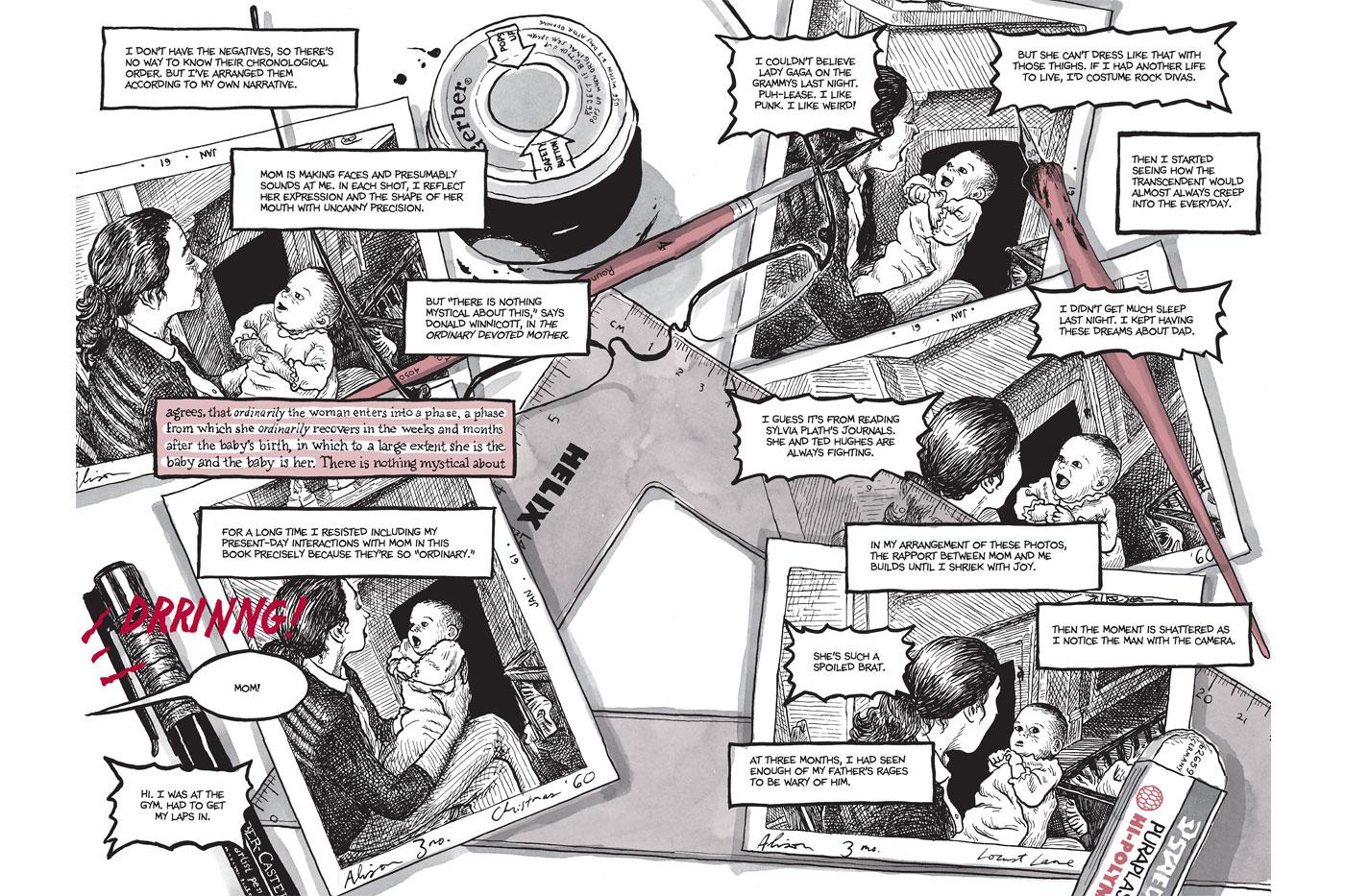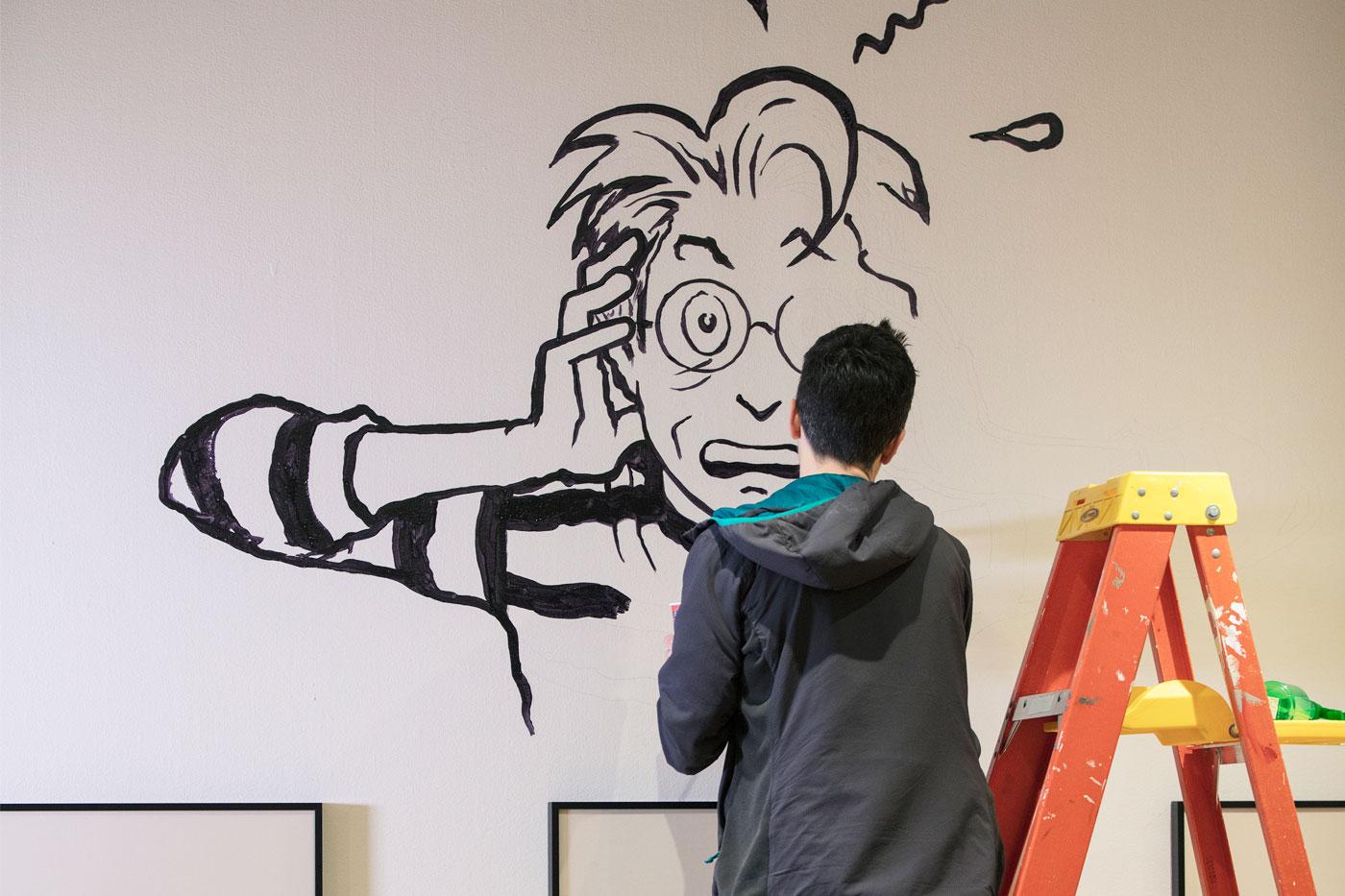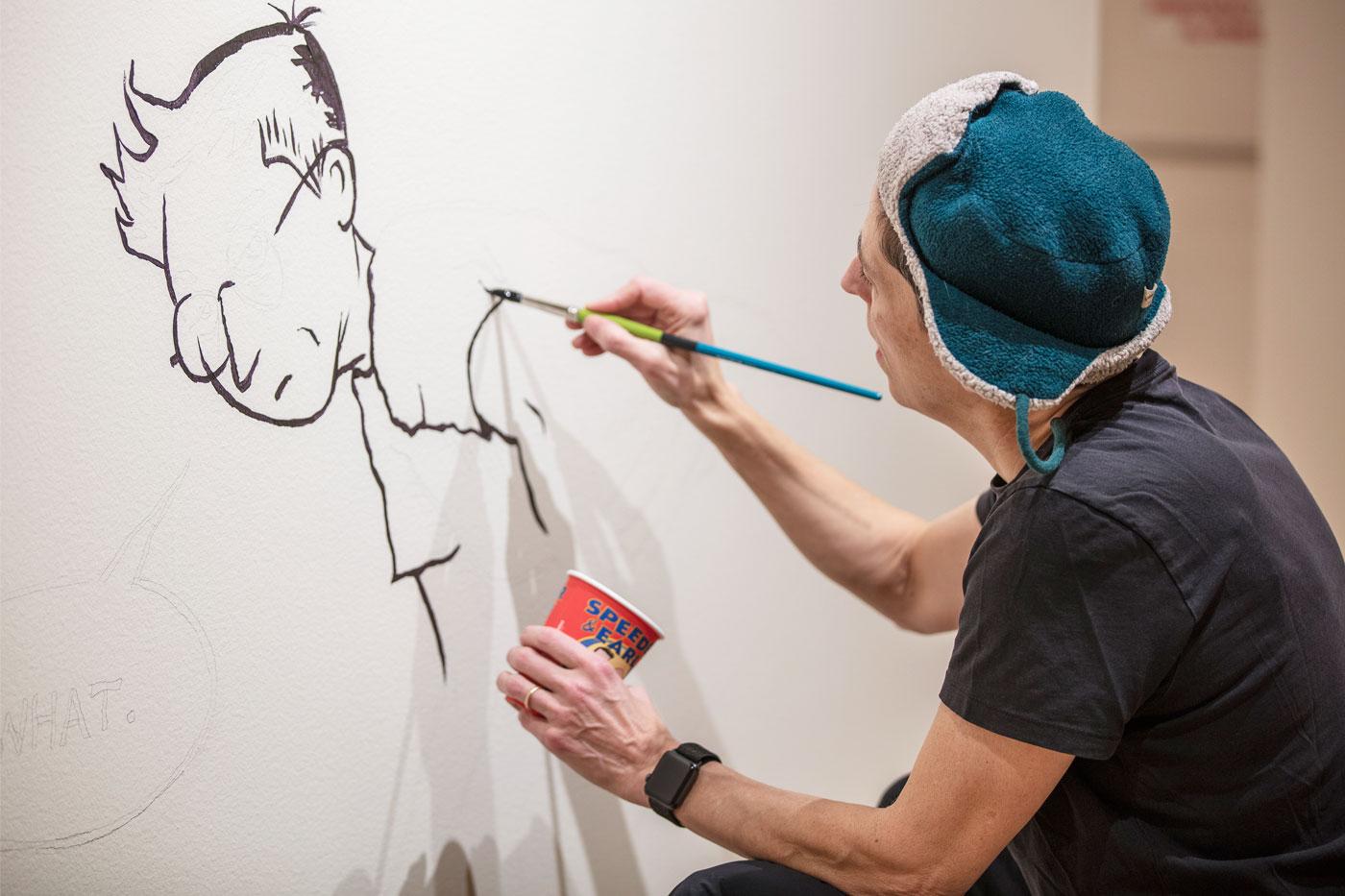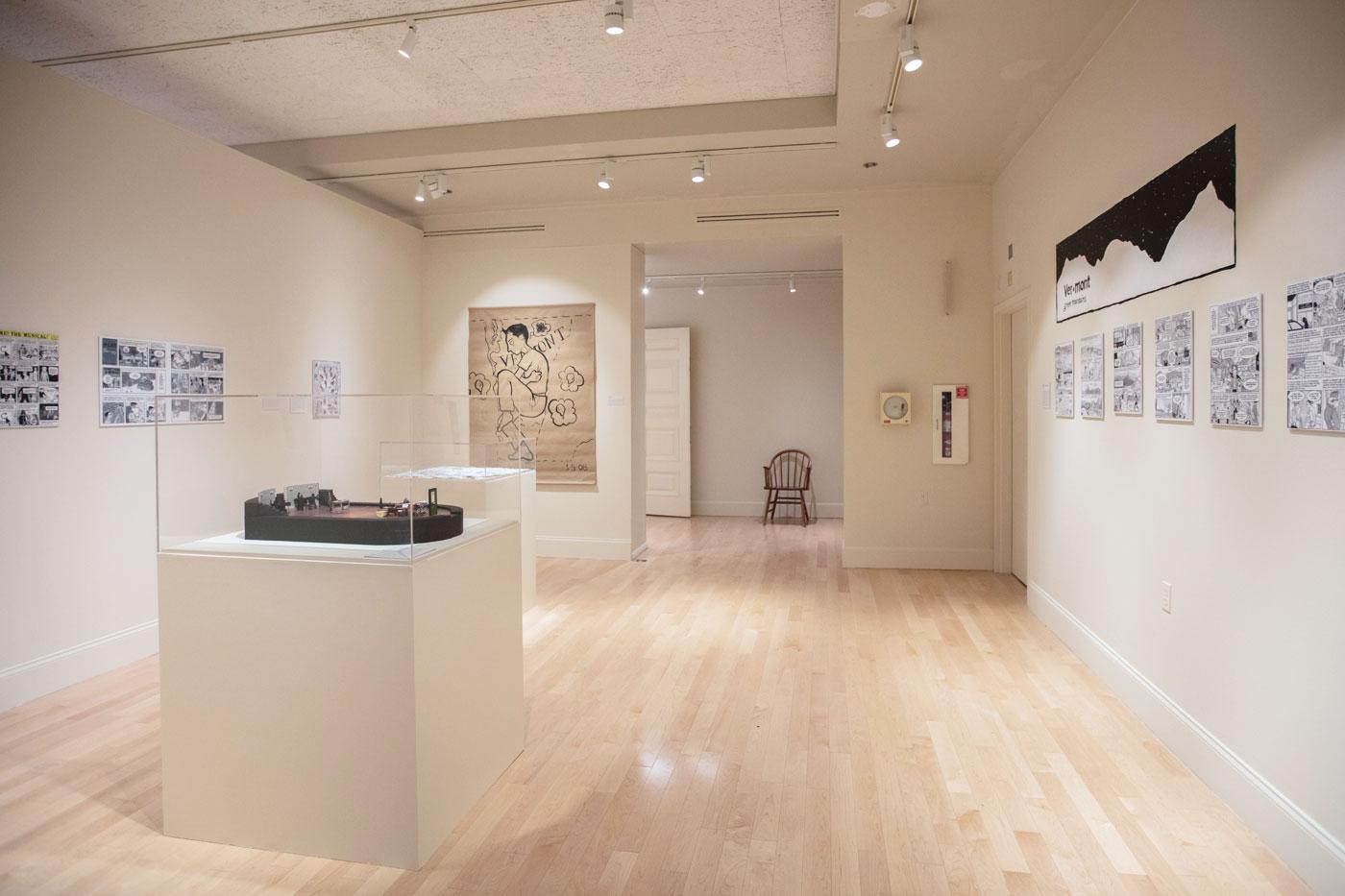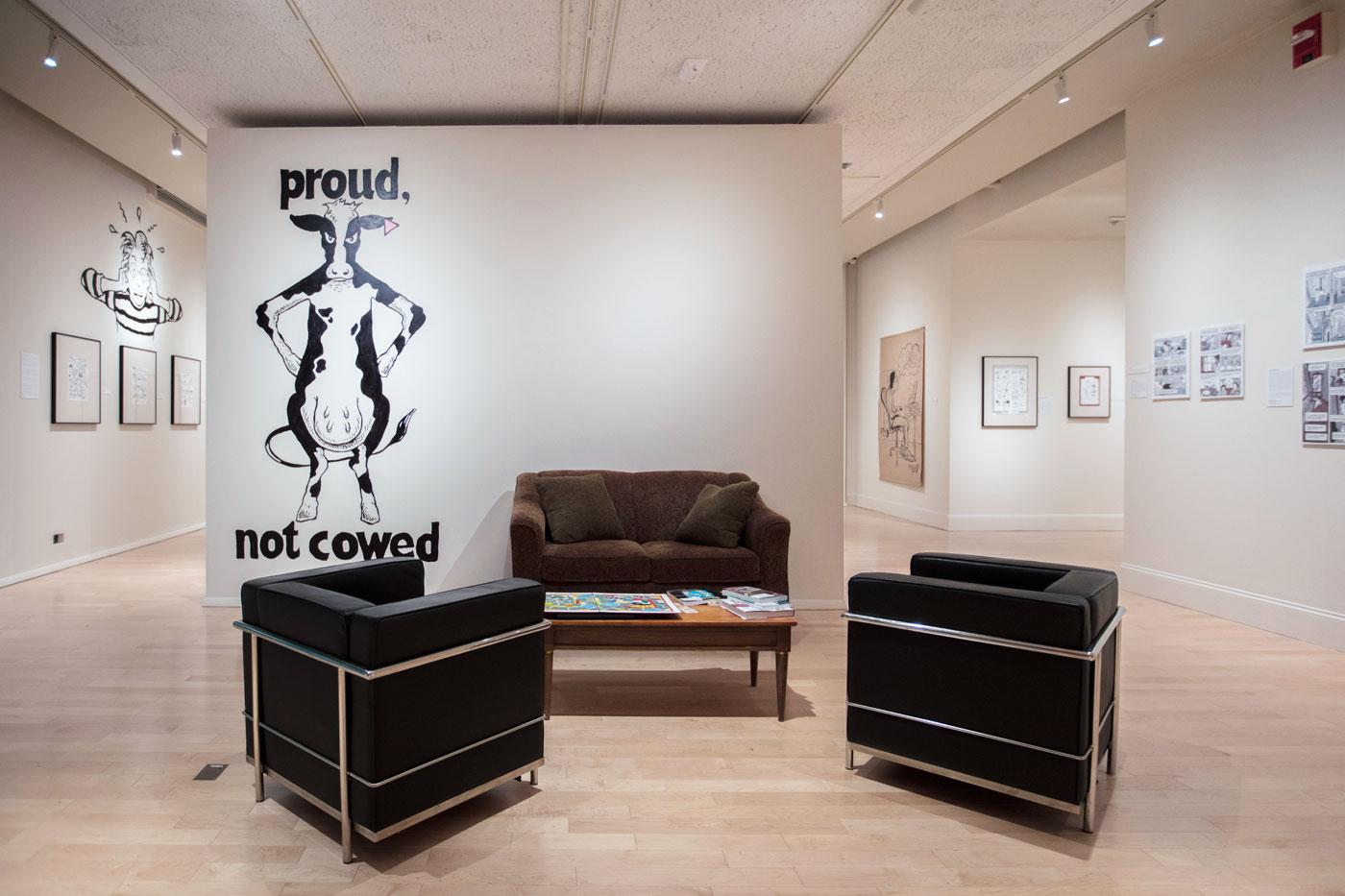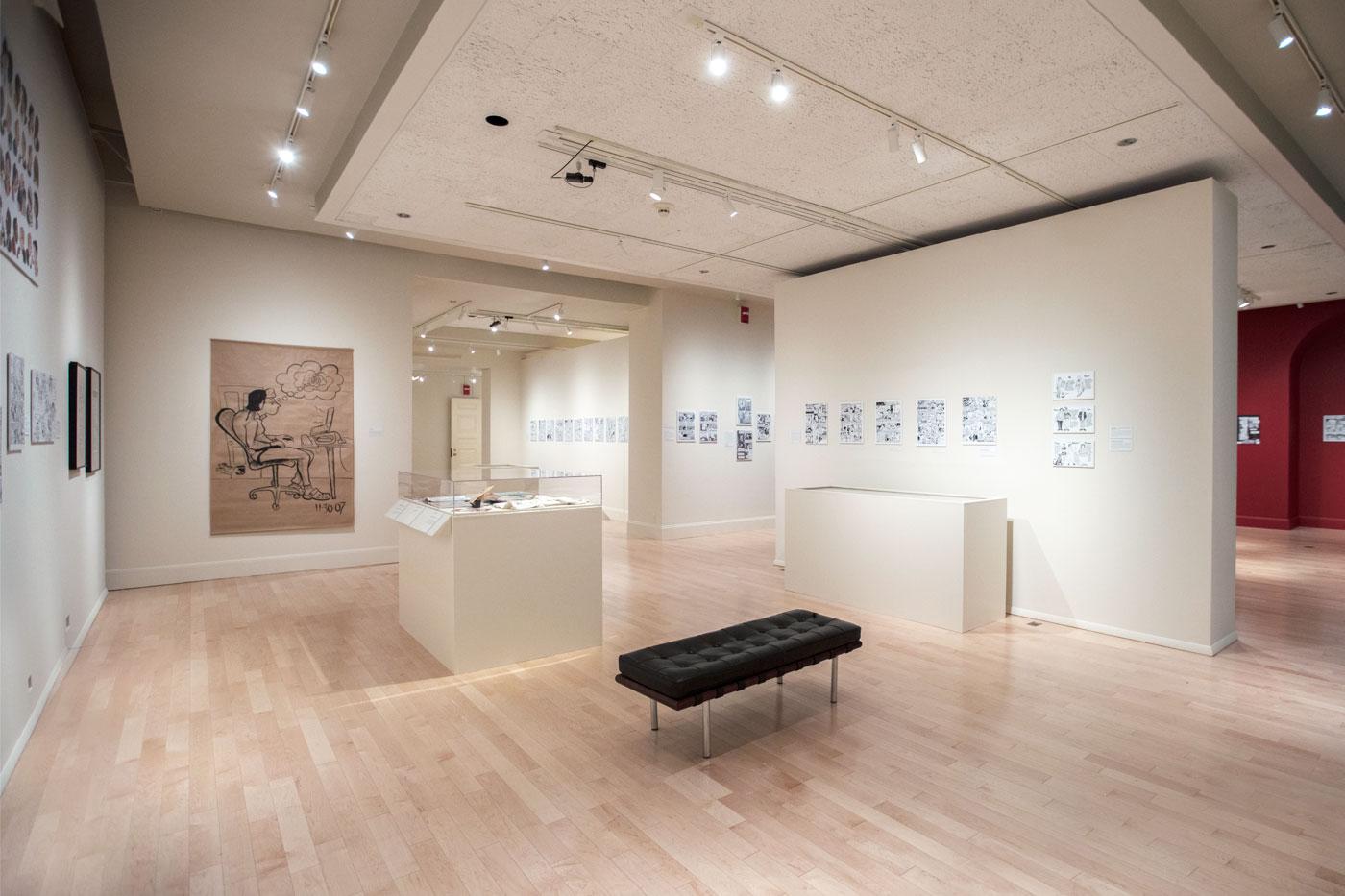Before she was a renowned graphic memoirist and winner of a MacArthur Foundation “Genius” grant, Alison Bechdel was an archivist of the self. She plunders the flotsam and jetsam of her childhood to unearth the richly layered complexities of her adult life, turning those revelations into her celebrated work.
A major exhibition at the University of Vermont’s Fleming Museum of Art in 2018 revolved around three major projects: Dykes to Watch Out For, the syndicated comic strip she wrote and drew for twenty-five years; her graphic memoirs, Fun Home/A Family Tragicomic (2006), chosen Best Book of the Year by the New York Times, and also the basis of a Tony Award-winning musical of the same name; and the acclaimed, Are You My Mother? A Comic Drama (2012), a New York Times, USA Today, Time, Slate, and Barnes & Noble Best Book of the Year.
Bechdel’s consummate ability to tell her own story is reflected in all her work and in he exhibition. It was Bechdel who came up with the title for the show, Self-Confessed!, and she who designed the graphic iteration of it that sits above a near life-sized drawing of herself, in black ink, directly on the wall, scooping poop out of a litter box. Spontaneous, self-deprecating, and humorous, we immediately feel the artist’s presence, inviting us to enter her world. Another large scale wall drawing takes us further into her world, Plate # 27 from Dykes to Watch Out For “Marianne, dissatisfied with breakfast brew…” 1983. This character was the first “dyke to watch out for” appearing in a letter Bechdel wrote to a friend. The artist is now playing with the power of scale in this age of handheld screens. The elongated limbs, the full-frontal, spread-legged female, her clearly defined pubic triangle traced in nervous, itchy-twitchy lines is reminiscent of the erotic, deeply psychological portraits by Egon Schiele. Viewers who are familiar with Bechdel’s work on the printed page will encounter an artist to be dealt with in a new arena. Just as she narrates her own life in graphic novel form, Bechdel now becomes the arbiter of her work in the citadel of “fine art”, the museum.
While excited by the opportunity to organize her work for a museum show, it represented a new role for Bechdel, who has “struggled with the idea of the artist in our culture. Being a cartoonist was a way to rebel against the idea of high and low art.” Despite that, Bechdel recognized that tackling her fraught relationship with her father in Fun Home felt “intimate and not quite so silly. I had to reconnect with the fact that I was engaged in making art.”




